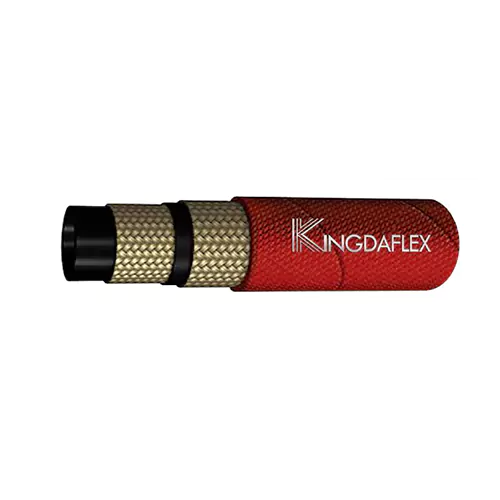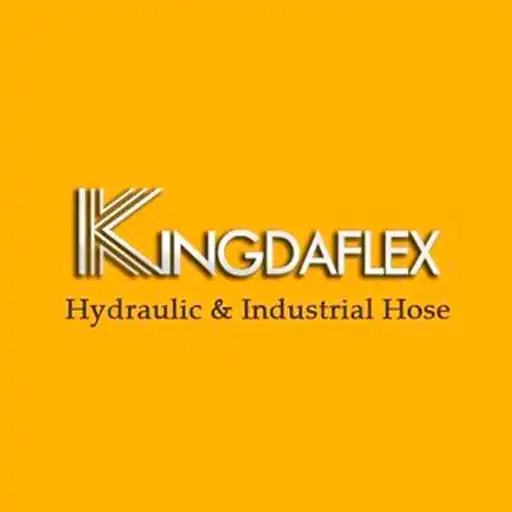Steam hoses are essential components in industrial systems, designed to safely transfer high-temperature steam across various applications. Choosing the right steam hose ensures operational efficiency, durability, and safety. Understanding the differences between types, their benefits, and suitable industrial uses is crucial for businesses aiming to optimize performance and reduce downtime.
Different steam hose types offer unique advantages depending on temperature, pressure, and flexibility requirements. From braided and corrugated hoses to flexible iron hoses, each is engineered for specific industrial conditions. By exploring their features, benefits, and applications, you can make informed decisions, ensuring reliable steam transfer and long-lasting performance in your operations.
What are Steam Hoses?
Steam hoses are specialized hoses designed to safely transport high-temperature steam from boilers or steam generators to various industrial equipment and systems. Constructed from durable materials like reinforced rubber, iron, or stainless steel, they withstand extreme temperatures and pressures. These hoses ensure reliable steam transfer, prevent leaks, and maintain efficiency in manufacturing, chemical, power, and food processing applications.
Steam Hose Types
Steam hoses are essential for transferring high-temperature steam safely and efficiently across various industrial systems. Different types of steam hoses are designed to meet specific temperature, pressure, and flexibility requirements. Choosing the right type ensures durability, safety, and optimal performance. This guide highlights seven common steam hose types, their benefits, and their industrial applications.
1. Braided Steam Hose
Braided steam hoses feature tightly woven reinforcement layers, providing exceptional strength and pressure resistance. The braided design prevents kinks, improves flexibility, and allows smooth steam flow. They maintain performance under high-temperature and high-pressure conditions, reducing risk of leaks and operational downtime while extending hose life across demanding industrial environments.
Braided steam hoses are widely used in chemical plants, manufacturing facilities, and power generation systems. They provide reliable steam transfer to machinery, boilers, and heating systems. Their durability ensures consistent operation in high-temperature environments, making them ideal for applications where safety, efficiency, and longevity are critical for continuous industrial performance.
2. Corrugated Steam Hose
Corrugated steam hoses have a flexible, accordion-like structure that absorbs vibration and accommodates system movement. The design allows for bending in tight spaces while maintaining strength and pressure resistance. Their corrosion-resistant construction ensures long-lasting service even in harsh industrial conditions, minimizing maintenance needs and operational interruptions.
These hoses are commonly applied in refineries, HVAC systems, and industrial plants requiring high-temperature steam transfer. They efficiently handle system expansion, vibration, and pressure fluctuations, providing smooth and safe steam delivery. Their flexibility and durability make them suitable for applications with frequent movement or alignment adjustments.
3. Flexible Iron Steam Hose
Flexible iron steam hoses combine strength and adaptability, allowing routing in tight or complex layouts without compromising performance. They withstand high temperatures and pressures, offering long service life. Their flexibility reduces strain on equipment connections, helping prevent damage and maintaining consistent steam transfer across industrial systems.
Industries such as chemical processing, food production, and industrial heating rely on flexible iron steam hoses. They provide safe, efficient steam delivery in challenging conditions, including repeated bending or vibration. These hoses reduce maintenance and operational downtime while ensuring high-temperature and high-pressure performance.
4. Stainless Steel Steam Hose
Stainless steel steam hoses resist corrosion, heat, and chemical exposure while maintaining structural integrity. Their robust construction provides long-lasting durability under extreme operating conditions. They are ideal for environments requiring hygienic, clean, and chemically resistant steam transfer, ensuring safety and reliability in industrial processes.
These hoses are used extensively in food and beverage production, pharmaceutical manufacturing, and petrochemical plants. Stainless steel steam hoses deliver safe, consistent steam while reducing maintenance due to their superior material strength. Their corrosion resistance ensures long-term performance in high-temperature, high-pressure, and chemically demanding applications.
5. Rubber Steam Hose
Rubber steam hoses offer flexibility and resistance to heat, making them easy to handle and install. Their lightweight construction allows for convenient movement and connection, while still providing reliable steam transfer in industrial systems. They are suitable for moderate-pressure and temperature applications, offering cost-effective solutions for many industries.
Rubber steam hoses are commonly used in boiler connections, manufacturing, and cleaning systems. They deliver safe, dependable steam transfer while minimizing energy loss. Their durability and adaptability make them a practical choice for operations requiring lightweight, flexible hoses that maintain performance under typical industrial pressures and temperatures.
6. PTFE Steam Hose
PTFE steam hoses provide excellent chemical resistance and can withstand high temperatures. Their non-reactive, flexible construction allows safe handling of steam and other industrial fluids. Lightweight yet durable, PTFE hoses maintain consistent performance even in corrosive or demanding chemical processing environments, reducing maintenance requirements and operational risks.
PTFE steam hoses are ideal for chemical plants, food processing, and pharmaceutical industries. They safely transfer steam where chemical exposure or contamination risk exists. Their flexibility, high-temperature tolerance, and corrosion resistance ensure reliable, long-lasting operation for critical industrial applications requiring both safety and efficiency.
7. Composite Steam Hose
Composite steam hoses combine multiple materials, offering strength, flexibility, and high-temperature resistance. They are designed for durability while remaining lightweight and easy to handle. The layered construction absorbs vibration, withstands pressure fluctuations, and extends hose life, providing reliable steam transfer across industrial systems.
Composite steam hoses are used in high-pressure applications such as power plants, manufacturing lines, and industrial heating systems. They provide safe and efficient steam delivery while reducing energy loss and maintenance. Their versatile construction ensures adaptability for diverse industrial conditions, delivering long-lasting performance in demanding environments.
How to Choose Suitable Steam Hoses?
Choosing the right steam hose is crucial for efficiency, safety, and durability in industrial applications. Factors such as temperature, pressure, flexibility, and chemical compatibility must be considered to ensure reliable steam transfer. Proper selection reduces maintenance, prevents leaks, and enhances the performance of your steam systems.
- Consider Temperature Ratings: Choose a steam hose that can handle the maximum system temperature. Using a hose with insufficient resistance may cause deformation or failure. We offer hoses designed for high-temperature applications, ensuring safe, reliable, and consistent steam transfer under extreme conditions.
- Check Pressure Capacity: Select hoses with pressure ratings suitable for your system. Exceeding the limit can lead to leaks or bursts. We provide high-pressure hoses that maintain integrity and safety while minimizing downtime and operational risks in demanding industrial environments.
- Assess Material Compatibility: Ensure the hose material is compatible with steam and any chemicals it may contact. Incompatible materials may corrode or degrade. We supply hoses in iron, stainless steel, rubber, PTFE, and composite materials to resist specific chemical and temperature challenges.
- Evaluate Flexibility Needs: Determine how much bending or movement the hose must handle. Rigid hoses may not fit tight spaces or may stress connections. We offer flexible, braided, and corrugated hoses that endure repeated bending without compromising performance or safety.
- Consider Length and Diameter: Choose appropriate hose lengths and diameters for efficient steam transfer. Incorrect sizing can cause pressure loss or strain. We help customize hoses to your system, optimizing flow, performance, and durability while ensuring seamless equipment integration.
Conclusion
Selecting the right steam hose type is vital for efficient and safe steam transfer in industrial applications. Each type offers distinct advantages, and understanding their benefits helps you optimize system performance while reducing maintenance costs and operational risks. We provide a wide range of durable, high-quality steam hoses.
At Kingdaflex, we ensure our steam hoses meet diverse industrial needs, including high-pressure and high-temperature applications. Our hoses are built for longevity, safety, and consistent performance, providing reliable solutions across manufacturing, chemical processing, power generation, and food industries worldwide.
Get wholesale steam hoses from Kingdaflex to enjoy high-quality, customizable options. We offer competitive pricing, flexible lengths, and tailored solutions to match your exact requirements. Trust our expertise to supply the right steam hose, ensuring efficiency, durability, and safety in every industrial application.


